For 30 years, the CSEG has been awarding scholarships to worthy geophysical students. From 1968 to 1999, a total of $610,862 has been disbursed to undergraduate and graduate students in universities and technical colleges across the country. This year, the committee awarded 17 scholarships of $1,500, a total of $25,500. “The best part of the job is at the end of the year when, as senior trustee, you write the cheques,” says Ron Larson, committee chairman in 1999. “In financial terms, it’s about one semester’s tuition, which is immense for some people.”
There are a number of sources for the funds, primarily donations from the service industry, individuals and oil companies, but the CSEG also disburses funds from various memorial trusts and capital that has been set aside by the society.
Every year, the committee identifies over a dozen worthy recipients from up to 60 applicants. They are judged by their academic standing, financial need, interest in geophysics and extra-curricular activities. “Academic standing is very important, but we also look at activities outside of geophysics,” says Larson. “Are they putting in time to better their community? Excellence in another field, such as athletics, is also important.”
But what impact does the largesse have upon its recipients? Out of the 505 lucky winners, we contacted a small sampling, and asked them how the CSEG scholarship awards affected their lives.
Jennifer Leslie
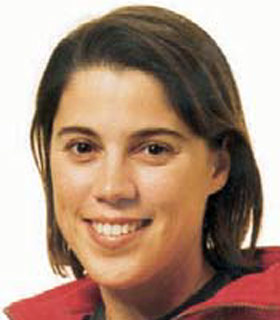
Although the CSEG scholarships awards can’t take all the credit, they were instrumental in helping Jennifer Leslie get out of the breweries and into a life of seismic research.
A native of Toronto, Leslie attended the University of Waterloo and graduated in 1993 with an Honours Physics degree. At the time, there were few professional opportunities in her field, and she worked for two years in the Molson Brewery lab, before deciding to return to school to do graduate work at the University of Calgary. Thanks in part to the three $1,500 CSEG scholarships that she received, she graduated with a PhD in physics earlier this year.
Fortunately, the industry had returned to hiring mode, and Leslie could forsake the call of the keg. “I’m in industry now with Kelman Technologies,” she explains. “I did a lot of thesis work with them — they let me use their systems.”
Leslie will be able to put her thesis topic, P-Waves and seismic imaging through dipping, transversely isotropic media, to good work. “A lot of big companies are contracting out research and Kelman is developing an R&D service.”
Although qualified to teach at university, Leslie intends to remain in the industry portion of the profession. “It’s a lot of fun. I was always better at applied physics.”
Tony Lambert
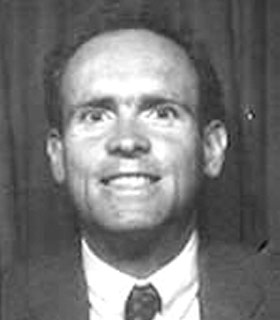
Tony Lambert was a young teenager living in Edmonton when he discovered a love for numbers and science, a sure-fire combination for geophysics. “I was good at math and my dad was a geologist,” he recalls. “I had both the aptitude and the interest.”
Lambert entered the University of Alberta in 1971, and soon stood out for his academic achievements, achieving an 8.8 average. He was awarded a CSEG scholarship in 1973, at the end of his second year. “The scholarship was greater than tuition, so it was very useful to have at the time, but I was also pleased with the recognition. “It said “You’re part of the community.””
When Lambert graduated from the U of A with an Honours BSc in 1978, the industry was crying out for qualified geophysicists. “There were only two or three students in honours geophysics at the U of A. I had eight or nine job offers.” Chevron was an industry leader in the field at the time, and Lambert signed on with the Calgary company.
It wasn’t long before Lambert’s career path was pointed in a new direction, however. “We had to drill a well, and my supervisor was gone, and I had to pick a site,” he recalls. “There was nothing there, and I showed them on the seismic, but they said, “We need to drill a well anyway, we’re legally obligated to drill.”” Lambert was impressed by the power of the contract over science and, when the well came up dry, decided to go into the legal profession.
In 1980, Lambert quit his job as a geophysicist, moved to Ontario, and entered the law program at the University of Toronto. After graduating in 1983, he spent the next six years qualifying for a patent law designation. In 1989, he settled in Edmonton and founded Thompson & Lambert, a patent law firm.
To this day, Lambert’s background serves him in good stead. “Electrical stuff, things like signal analysis, is a tremendous asset when dealing with telecom companies. Also, the geological end comes in handy - I know what a dognut on a well is.”
Ken Mitchell
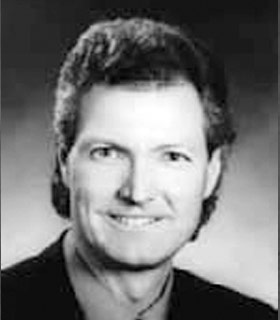
As a young man in Ottawa, Ken Mitchell was considering either a career in engineering or natural sciences, when he saw scholarship information for the SEG. “At the time, geophysics was a relatively obscure profession, but it sounded fascinating, with earthquakes and volcanoes and O&G,” says Mitchell. He sent away an application, and was awarded a $500 scholarship toward taking courses in geophysics.
That was enough for Mitchell to make up his mind. Attending the University of Western Ontario, he spent a summer working for the Geological Survey of Canada in the Mackenzie Delta, running shallow seismic over pingoes in an effort to understand their morphology and creation, and helping conduct shallow offshore reflection surveys. “We were cutting geogel (dynamite) and throwing it over the side,” he recalls. “You can’t do that anymore.”
In all, Mitchell received the scholarship four times before he graduated with an Honours BSc in 1980.
After graduation, Mitchell worked at Chevron for five years before transferring to Union Oil. After stints in Oklahoma and Indonesia, Mitchell returned to Calgary and once again explored in the Far North, eventually ending up with Canadian Forest’s NWT group, where he is currently a senior geophysical specialist. “Not only does geophysics give you a good scientific grounding - it’s fun, fascinating and adventurous. I’ve been to strange and wonderful places all around the world.”
Dave O’Neill

Montreal native Dave O’Neill was attending the University of New Brunswick in 1985 when, as the only undergraduate pursuing a geological and geophysical degree, he was awarded his first CSEG scholarship of $1,250. “I recall how fantastic it was to receive the scholarship. It wasn’t just the money - here was a society in Calgary promoting the science of geophysics and going to the effort to ensure that people across the country received some support.”
After graduating in 1986, he moved to Calgary to pursue his masters degree at the U of C, where he was awarded a second scholarship of $1,500, in 1987.
When O’Neill graduated in 1988, however, employment prospects in the oilpatch were few and far between. “It was difficult to even get an interview.”
After much effort, O’Neill managed to line up an interview with Canterra. Fortunately, one of the hiring committee was geophysicist Emmanuel Malterre, who was also a sitting member of the scholarship committee. “It was nice he knew something about me - it sure didn’t hurt.”
O’Neill was hired by Canterra, and worked there briefly before the company was taken over by Husky. He eventually ended up at Enron (now EOG Resources) where he was tapped to help as a volunteer on the scholarship committee, from 1996- 98. “Being on the committee, you get to see that there are students out there with fantastic qualifications,” says O’Neill. “Any worries that the flow of talent into the discipline has died are unfounded.”
Graziella Kirtland Grech
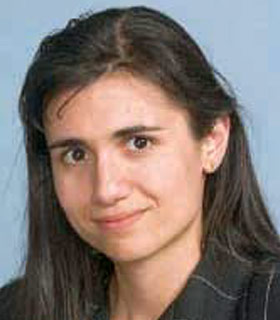
Graziella Kirtland Grech is a native of Malta, a tiny, independent island in the middle of the Mediterranean Sea. After obtaining her BSc in physics and computer science and MSc in exploration geophysics at the University of Malta, she worked as a geophysicist for the Government of Malta for three years. In 1997 she was accepted for a doctoral program at four universities: Queens, University of Alberta, Imperial College in London, and the University of Calgary.
“I’d never been to Calgary before, but I had a brother living in Edmonton, and he was positive about Canada” she notes. “I also liked the fact that the University of Calgary had industry contacts. I wanted to do something practical in applied geophysics.”
But what finally made her choose the U of C was the research undertaken by the Fold-Fault Research Project (FRP). Her proposed thesis topic is Integration of VSP and surface seismic data for enhanced depth imaging in complex structural areas.
In both 1998 and 1999, Grech was awarded $1,500 CSEG scholarships and $1,000 SEG scholarships. “They pay off most of the tuition fees, which is good, because you can concentrate on your work without worrying on how you’re going to make ends meet” says Grech.
Grech was recently offered a full-time position with Veritas as a research geophysicist. “Veritas is a sponsor of the FRP, and they were familiar with my work.”
Although Calgary’s winters are far more frigid than her homeland, Grech has no plans to return to Malta. “The future is here and I plan to stay.”
Mike Perz
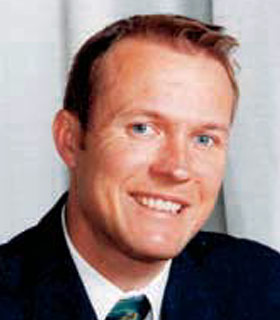
After graduating from the University of Toronto in 1990 with an Honours BSc, Physics Specialist, Mike Perz decided to head to Vancouver and pursue a Masters program in geophysics at the University of British Columbia, where he soon discovered he had a knack for computer programming. “They shot some seismic lines up the Fraser Canyon along a crooked road, and it needed a lot of nonstandard processing, so I wrote some custom code for crooked line, 2D processing.”
In fact, Perz pursued his education with such initiative and distinction that he received two CSEG awards of $1,500, in 1991 and 1992.
The early 1990s were a downcycle for the industry, however, and when Perz tried to convert his schooling into a viable career, he was met with closed doors. “I sent out 40 letters, and got 40 reject letters back.”
Fortunately, his experience as a programmer got him a permanent position. “My thesis adviser talked to a Pulsonic executive, and learned that they needed a programmer,” he recalls.
After graduating in 1993, he took a position with Pulsonic Geophysical, in Calgary. He worked there from 1993 to 1997, then jumped ship to Geo-X to become an applications programmer, where he is currently employed.
Perz didn’t forget the impact that the scholarships had during his dark days as a student, however. “With the scholarships, I knew that at least somebody cared,” he notes. He is now on the scholarship committee, working to help others. “I felt it was time to return something.”
Long Term Benefits
For many of the contacted recipients, the value of their CSEG scholarships persists in many different ways, long after the money has been spent.
“Having that scholarship was more important than I realized at the time,” says Tony Lambert. “My son is in (first-year) mathphysics, and he had straight 9’s last year, but there are few scholarships in his discipline — there is no industry interested in supporting math physics. When I was a student, the scholarship showed me that employers were interested in that career path.”
“It was encouraging to have support from the industry,” says Jennifer Leslie. “It gave me the opportunity to focus on my work. It was also a nice validation of my work.”
“A lot of recipients are pretty thankful for it, including myself,” says Ken Mitchell. “As treasurer of the CSEG, I made it a priority to capitalize the scholarship committee further with reserve cash.”
“It’s a signal to students that there is a world beyond school, and people are paying attention,” says Ron Larson. “It encourages students to stay in the profession.”
“It certainly made the student quality of life more palatable,” says Mike Perz. “When I was in grad school, I was away from the safety umbrella of my family. When you’re earning $1000 per month in grad school, times are lean. It allows you to buy the little things, like a beer at the grad club, that help maintain your sanity.”
“The teaching assistant allowance is not quite enough,” says Graziella Kirtland Grech. “It’s nice to know you can receive funding from other sources.”
As for the future of the scholarship program, the CSEG is considering increasing payouts. “The awards in 2000 may be raised to $2,000,” says Larson.
And that’s good news to all geophysical students; past, present and future. “I really appreciated the support over the last few years,” says Grech. “I hope the scholarships continue, so that other students can benefit.”
The 2000-2001 committee consists of Chairman Karen Cameron, Senior Trustee Joe Stuhec and Junior Trustee Mike Perz.











Join the Conversation
Interested in starting, or contributing to a conversation about an article or issue of the RECORDER? Join our CSEG LinkedIn Group.
Share This Article